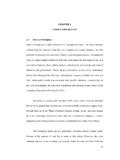Transcription of Farmers Suicide and Response of the Government …
1 IOSR Journal of Economics and Finance (IOSR-JEF) e-ISSN: 2321-5933, p-ISSN: 7, Issue 3. Ver. I (May. - Jun. 2016), PP 01-06 DOI: 1 | Page Farmers Suicide and Response of the Government in India -An Analysis Dr. G. L. Parvathamma Associate professor&co-ordinator, Department of Economics, Bangalore University, , Kolar, Abstract: India is an agrarian country with around 60% of its people depending directly or indirectly upon agriculture. Farmer suicides account for of all suicides in India. Farmer Suicide in India is the intentional ending of one's life by a person dependent on farming as their primary source of livelihood.
2 There are number of reasons for farmer suicides, such as monsoon failure, high debt burdens, genetically modified crops, Government policies, public mental health, personal issues and family problems. There is also accusation of states fudging the data on farmer suicides. In 2012, the National Crime Records Bureau of India reported 13,754 farmer suicides. The highest number of farmer suicides was recorded in 2004 when 18,241 Farmers committed Suicide . The farmer s Suicide rate in India has ranged between to per 100,000 in the total population, over a 10-year period through 2005. From 1995 to 2013, a total of 296,438 Farmers have killed themselves in India, or an average of 16,469 suicides per year.
3 During the same period, about million people died per year in India from other causes including malnutrition, diseases and suicides that were non-farming related, or about 171 million deaths from 1995 to present paper made an attempt to analyses the reasons for Farmers Suicide in India and the State Government field surveys (Statistics) on variation of Farmers suicides in Different states. It also focused on Government Response to Farmers Suicide and Effectiveness of Government policies. Keywords: farmer suicides, National Crime Records Bureau of India, genetically modified crops I. Introduction India is an agrarian country with around 60% of its people depending directly or indirectly upon agriculture.
4 Farmer suicides account for of all suicides in India. Farmer Suicide in India is the intentional ending of one's life by a person dependent on farming as their primary source of livelihood. Activists and scholars have offered a number of conflicting reasons for farmer suicides, such as monsoon failure, high debt burdens, genetically modified crops, Government policies, public mental health, personal issues and family problems. There is also accusation of states fudging the data on farmer suicides. In 2012, the National Crime Records Bureau of India reported 13,754 farmer highest number of farmer suicides was recorded in 2004 when 18,241 Farmers committed Suicide .
5 The farmer s Suicide rate in India has ranged between to per 100,000 in total population, over a 10-year period through 2005. From 1995 to 2013, a total of 296,438 Farmers have killed themselves in India, or an average of 16,469 suicides per year. During the same period, about million people died per year in India from other causes including malnutrition, diseases and suicides that were non-farming related, or about 171 million deaths from 1995 to records relating to frustration, revolts and high mortality rates among Farmers in India, particularly cash crop Farmers , date back to the 19th century. The high land taxes of 1870s, payable in cash regardless of the effects of frequent famines on farm output or productivity, combined with colonial protection of usury, money lenders and landowner rights, contributed to widespread penury and frustration among cotton and other Farmers , ultimately leading to Deccan Riots of 1875-1877.
6 The British Government enacted the Deccan Agriculturists Relief Act in 1879, to limit the interest rate charged by money lenders to Deccan cotton Farmers , but applied it selectively to areas that served British cotton trading interests. Rural mortality rates, in predominantly agrarian British India, were very high between 1850 to 1940s. However starvation related deaths far exceeded those by Suicide , the latter being officially classified under "injuries". Death rate classified under "injuries", in 1897, was 79 per 100,000 people in Central Provinces of India and 37 per 100,000 people in Bombay Presidency. Ganapathi and VenkobaRao analyzed suicides in parts of Tamil Nadu in 1966.
7 They recommended that the distribution of agricultural organo-phosphorus compounds be restricted. Similarly, Nandi et al. in 1979 noted the role of freely available agricultural insecticides in suicides in rural West Bengal and suggested that their availability be regulated. Hegde studied rural suicides in villages of northern Karnataka over 1962 to 1970, and stated the Suicide incidence rate to be per 100,000 populations. Reddy, in 1993, reviewed high rates of farmer suicides in Andhra Pradesh and its relationship to farm size and productivity. Reporting in popular press about Farmers ' suicides in India began in mid 1990s, particularly by PalagummiSainath.
8 In 2000s, the issue gained international attention and a variety of Indian Government initiatives National Crime Records Bureau, an office of the Ministry of Home Affairs Government of India, has Farmers Suicide and Response of the Governmentin India -An Anlysis DOI: 2 | Page been collecting and publishing Suicide statistics for India since the 1950s, as annual Accidental Deaths & Suicides in India reports. It started separately collecting and publishing farmer s Suicide statistics from actual demographic breakdown published in the 2010 NCRB report (Page on Ncrb), out of 134,599 suicides reported in India for that year, 15,964 less than 12% belonged to the farming community, though Farmers constitute almost two-thirds of the billion-strong Indian population.
9 In comparison, housewives at 25,058 and non-farming self-employed (business+ professional + other) at 39,365 are far more suicidal. Moreover, the leading causes of Suicide in the population as a whole are family problems and ill-health, around 20% each, with economic failures, bankruptcies etc. coming in at 6%.For a global data point, Suicide in the United States is around 37,000 per annum for a population of 314 million. Various reasons have been offered to explain why Farmers commit Suicide in India, including, drought, and debt, use of genetically modified seed, public health and Government economic policies. There is no consensuson what the main causes might be but studies show Suicide victims are motivated by more than one cause, on average three or more causes for committing Suicide .
10 Panagariya states that, "farm-related reasons get cited only approximately 25 percent of the time as reasons for Suicide ", and, "studies do consistently show greater debt burden and greater reliance on informal sources of credit" amongst Farmers who commit Suicide . Reasons for farmer s Suicide in India are as follows; Reasons for farm suicides Percent (of suicides) Habits like drinking, gambling, etc. Failure of crops Other reasons ( chit fund) Family problems with spouse, others Chronic illness Marriage of daughters Political affiliation Property disputes Debt burden Price crash Borrowing too much ( for house construction) Losses in non-farm activities Failure of bore well A study conducted in 2014 found that there are three specific characteristics associated with high risk Farmers : "those that grow cash crops such as coffee and cotton; those with marginal farms of less than one hectare; and those with debts of 300 Rupees or more.














